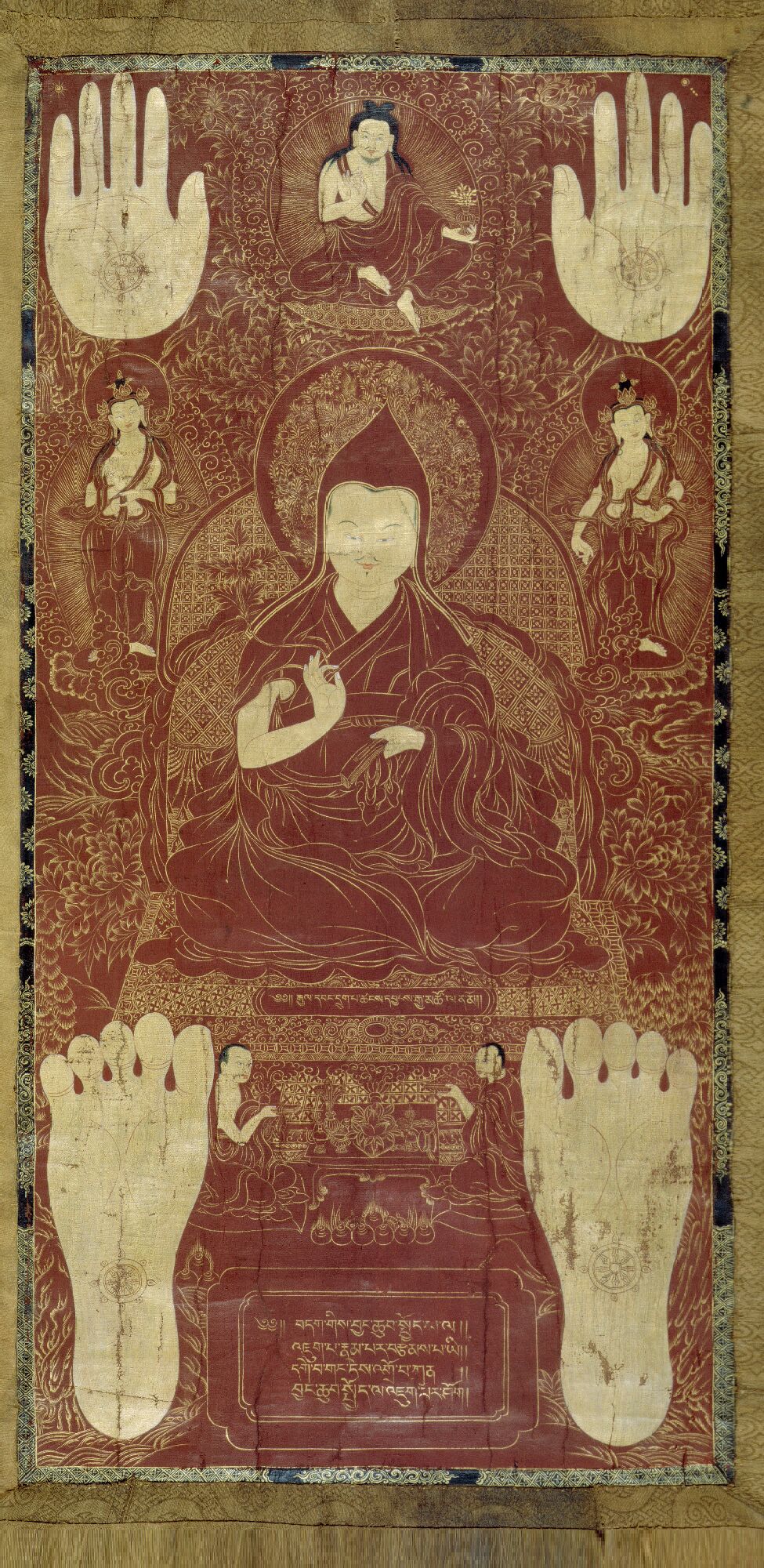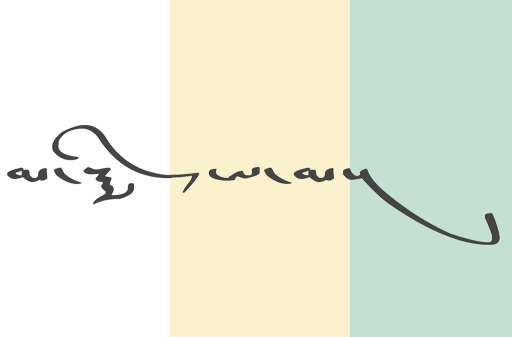 The Sixth Dalai Lama, Tsangyang Gyatso, was born in 1682 in the region of Mon Tawang in present-day Arunachal Pradesh, India to Tashi Tenzin and Tsewang Lhamo.
The Sixth Dalai Lama, Tsangyang Gyatso, was born in 1682 in the region of Mon Tawang in present-day Arunachal Pradesh, India to Tashi Tenzin and Tsewang Lhamo.
In order to complete the Potala Palace, Desi Sangye Gyatso carried out the wishes of the Fifth Dalai Lama and kept his death a secret for fifteen years. People were told that the Great Fifth was continuing his long retreat. On important occasions the Dalai Lama’s ceremonial gown was placed on the throne. However, when Mongol princes insisted on having an audience, an old monk called Depa Deyrab of Namgyal Monastery, who resembled the Dalai Lama, was hired to pose in his place. He wore a hat and eyeshadow to conceal the fact that he lacked the Dalai Lama’s piercing eyes. The Desi managed to maintain this charade till he heard that a boy in Mon exhibited remarkable abilities. He sent his trusted attendants to the area and in 1688, the boy was brought to Nankartse, a place near Lhasa. There he was educated by teachers appointed by the Desi until 1697, when the Desi sent his trusted minister, Shabdrung Ngawang Shonu to the Manchu court to inform Emperor K’ang-si of the death of the Fifth and discovery of the Sixth Dalai Lama. He announced the fact to the people of Tibet, who greeted the news with gratitude and joy and thanked the Desi for saving them from lamenting the setting of the sun and, instead, making them rejoice in its rising.
The Desi invited the Fifth Pachen Lama, Lobsang Yeshi, to Nankartse, where Tibet[s second highest religious leader administered the vows of a novice monk to the youth and named him Tsangyang Gyatso. In 1697, the fourteen-year old was enthroned as the Sixth Dalai Lama in a ceremony attended by Tibetan government officials representing the three major monasteries – Sera, Gaden, and Drepung – Mongol princes, representatives of Emperor K’ang-si and the Lhasa populace.
In 1701 there was a conflict between the Desi and Lhasang Khan, the descendant of Gushir Khan, and the latter killed the Desi Sangya Gyatso, which disturbed the young Dalai Lama. He left his monastic study and chose the outdoor life, he had no plans to take the fully ordained vows. In fact, he visited the Panchen Lama in Shigatse and requested his forgiveness, and renounced even the vows of a novice monk. Though he continued to live in the Potala Palace, he roamed around Lhasa and other outlying villages, spending his days with his friends in the park behind the Potala Palace and nights in taverns in Lhasa and Shol (an area below the Potala) drinking chang and singing songs. He was known to be a great poet and writer and he wrote several poems. In 1706, he was invited to China and died on the way.
 Tsangyang Gyatso, who was enthroned with grand ceremony as the Sixth Dalai Lama on the golden throne in the Potala palace in 1697, was a special Dalai Lama. Born in renowned Nyingma family and brought up at a late age in Gelugpa tradition, Tsangyang Gyatso proved to be an uncomfortable blend of the two traditions. But, leaving aside the unfortunate politics that surrounded his desolate life, Tsangyang Gyatso brought to holy Lhasa and Shol taverns some of the purest and most beautiful lyrics of all times.
Tsangyang Gyatso, who was enthroned with grand ceremony as the Sixth Dalai Lama on the golden throne in the Potala palace in 1697, was a special Dalai Lama. Born in renowned Nyingma family and brought up at a late age in Gelugpa tradition, Tsangyang Gyatso proved to be an uncomfortable blend of the two traditions. But, leaving aside the unfortunate politics that surrounded his desolate life, Tsangyang Gyatso brought to holy Lhasa and Shol taverns some of the purest and most beautiful lyrics of all times.
Extraordinary as a lover of wine and women, melodious as a singer of love songs and above all, tragic as a national hero of the status of a Dalai Lama, reduced to become a heroic pawn at the hands of the Qosot Lhazang Khan, the Sixth Dalai Lama became a legend within his short lifetime. Worshipped and loved by Tibetan people with stainless faith, Tsangyang Gyatso’s songs became famous in every corner of Tibet receiving once again the fascination of simple folk poetry.
White crane!
Lend me your wings
I will not fly far
From Lithang, I shall return
So wrote a desolate and lonely Tsangyang Gyatso (whose name means ‘Ocean of Melodious Songs’), the Sixth Dalai Lama of Tibet, wrote to a lady-friend of his in Shol town in 1706, when he was being forcibly taken away to China by the Mongol soldiers of Qosot Lhazang Khan — away from his people and the Potala palace. No one understood the hidden meaning contained in the song nor did anyone suspect that the young Dalai Lama had decided to end his earthly manifestation and yield the Tibetan spiritual and temporal realm to the care of the next Dalai Lama. But when that very year the sad and shocking news of the ‘disappearance’ or more probably the ‘murder’ of Tsangyang Gyatso at Gunga-Nor lake spread across Tibetan landscape, the secret meaning of last of his many songs dawned on the grief-stricken and bewildered Tibetan masses who dearly longed for his presence during a turbulent turn of history, and anxiously looked towards Lithang for the next incarnation. It may be more correct and safer to state that some of the verses indirectly show his deep knowledge and practice of of tantra, as it is clear from the one song in which he has claimed:
Never have I slept without a sweetheart
Nor have I spent a single drop of sperm.
The claim of control over his flow of sperm openly declared his grasp and mastery of tantric practices.
